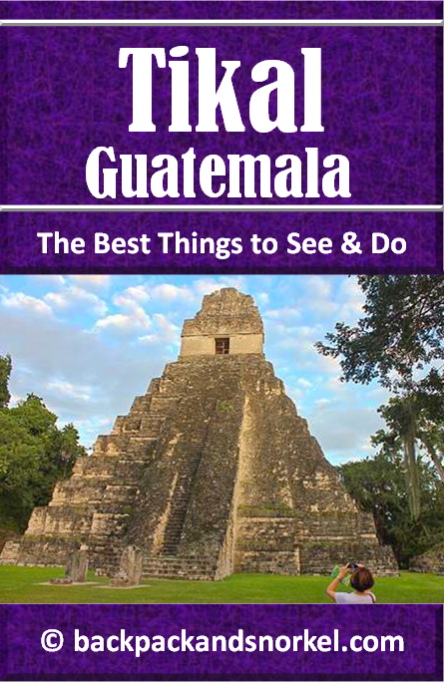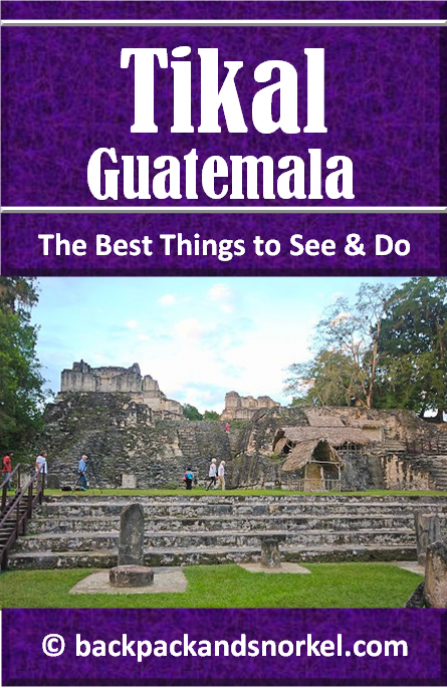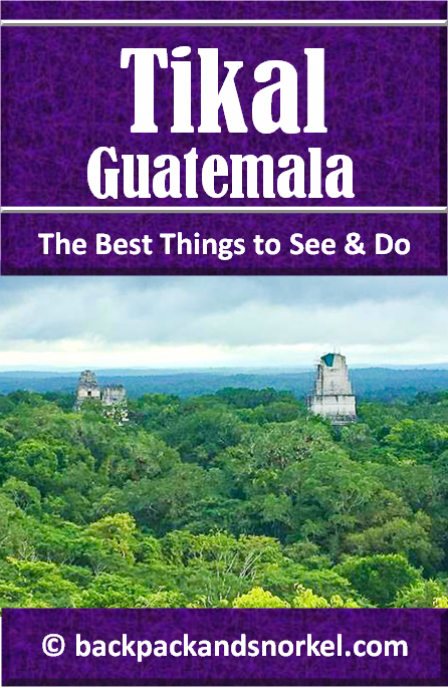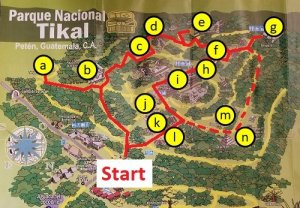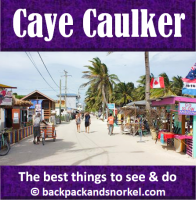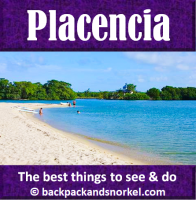BUILDING GROUPS IN TIKAL - Tikal Purple Travel Guide
The major temples are the main attractions of Tikal. When you walk the grounds, you will see lots of smaller building groups that have interesting stories. Some are accessible, some are not. We tell more about these misc. structures and provide background information and photos so you understand what you will see.
Table of contents:
GROUP F
This was Tikal’s marketplace and comprises 4 palace-like structures that are partially joined.
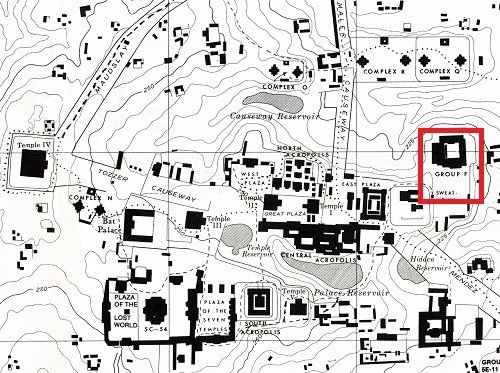

Source: Laporte, Juan Pedro, (1999), Trabajos no divulgado del Proyecto Nacional Tikal, Parte 1: Palacio de los Cinco Pisos, Grupo F, Grupo 6B-II, Plaza de los Siete Templos.
Nearby is Structure 5B-22, which is one of the two temascales (steam baths) that were found in Tikal. Here, merchants purified themselves before engaging in their trade.
Back to the Self-Guided Walking Tour of Tikal
PALACE OF THE GROOVES (PALACIO DE LAS ACANALADURAS, GROUP G)
Tikal’s Group G is also known as Palacio Acanaladuras which means Palace of the Vertical Columns. The name is derived from vertical column-like elements (pseudo-columns), or vertical grooves along the façades of the building, which are most apparent on the rear wall.

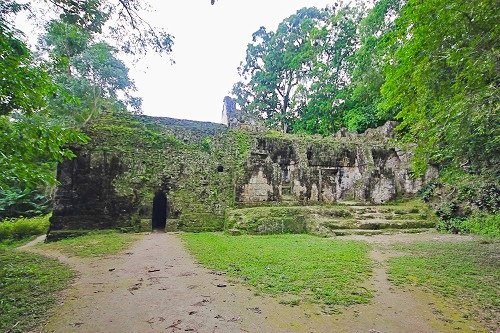
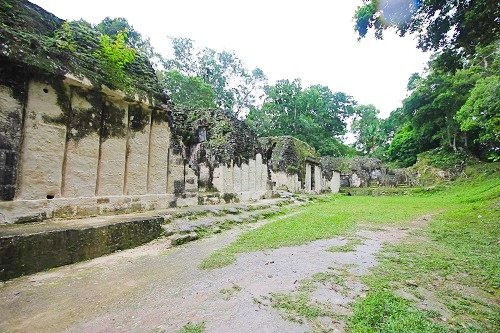
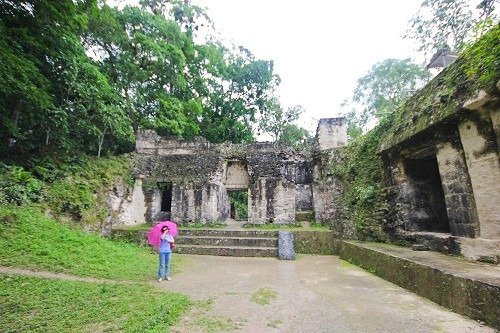
The buildings are of high quality and it is believed that they were built between 734 and 746AD by King Yik’in K’awiil as a palace.
The entrance is located in the north façade to a narrow tunnel that goes though the east wall and ends at the central courtyard.
With 29 vaulted chambers and more in the remains of the second story, it is one of the largest groups that has been uncovered in Tikal. Archaeologists found the remains of a giant stucco monster mask which they named the Witz Monster.
Back to the Self-Guided Walking Tour of Tikal
GROUP H
Initially overlooked by archeologists, Group H was not discovered until the 1920s and excavated until the 1950s.

Group H is connected to the rest of the site by a huge raised road called "sacbe" which means "white road" in the Mayan language. In the past “sacbe” roads were covered with plaster which gave them a white appearance.
GROUP L (GROUP 5B-1)
This group was likely built in 672AD, but demolished at around 740AD to provide construction material for Temple IV. What is left today are remains of a couple of plain monuments scattered on the ground.
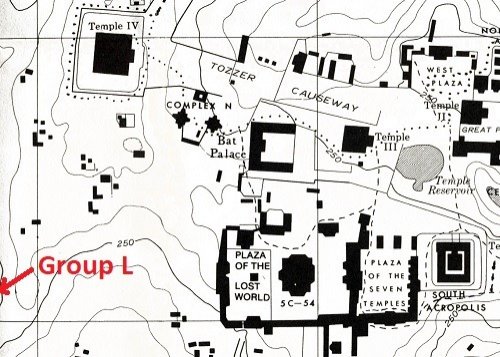
No publicly accessible road leads to this site.
GROUP M (GROUP 3D-1)
Being formerly a twin-pyramid, the west pyramid (Structure 3D-98) was mostly dismantled in ancient times. Structure 3D-100 is the second member of the twin-pyramid. Group M was only discovered in 1959.
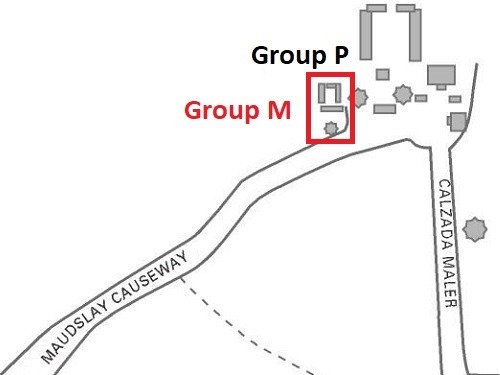
GROUP N (GROUP 5C-1)
The twin-pyramids of Group N were built in 711AD by king Ha Sawa Chaan-K'awil, according to the hieroglyphic text inscribed in Stela 16 that as found in nearby Structure 5C-17 and is paired with Altar 5.
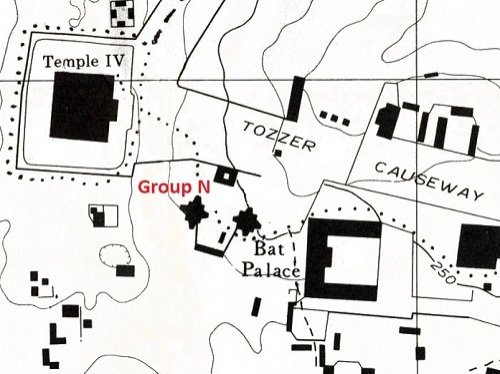
Stela 16 and altar 5 are among the finest examples of sculpted monuments from Tikal.
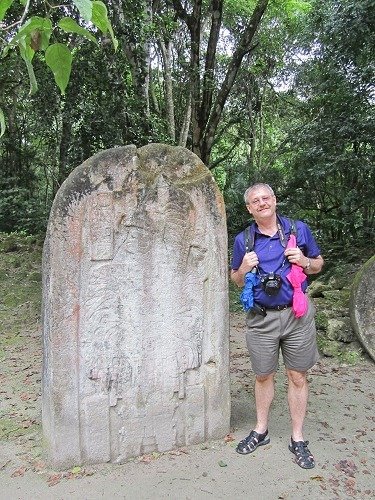
Altar 5 shows the sculpted image of two nobles (priests) behind an altar and it is believed that one of them is king Jasaw Chan K'awiil I. There are thighbones and a skull of an important woman on the altar (probably of the king’s wife) and both men are performing a ritual with them. This is not unusual as the Maya used the bones of their ancestors for rituals.
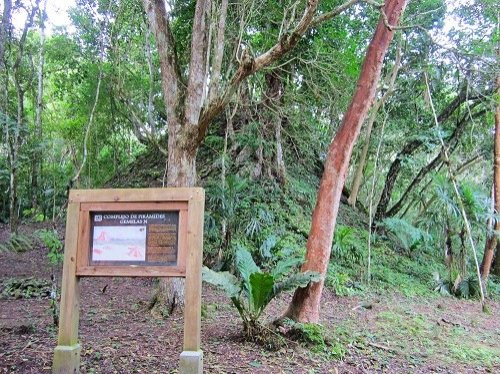
Back to the Self-Guided Walking Tour of Tikal
GROUP O (GROUP 4D-1)
This twin-pyramid group was likely built in 731AD. It is smaller than the two twin-pyramid groups Q and R which are located to the east directly across Maler Causeway.
It is also unusual, because the stela-altar pair in its northern structure are plain monuments, without sculptures and hieroglyphs.
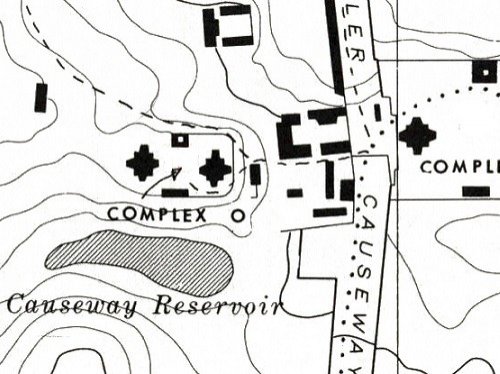
GROUP P (GROUP 3D-2)
Group P sits at the northern extreme of the Tikal site core, where Maudsley Causeway and Maler Causeway meet.

The majority of this group was built in 751AD by Yax Kin, the son of king Ha Sawa Chaan-K'awil.
The temple dates from around 530AD, however. It has a carving on one of the jambs which shows a head, probably of the king, and another carving which combines a jaguar and a frog. The jaguar symbolizes power and the frog fertility and life.
GROUP Q (GROUP 4E-4)
This is largest twin-pyramid complex at Tikal.
It was built in 771AD by king Yax Nuun Ayiin II who is shown on Stela 22 which stands in the complex's North Building. Stela 22 and its paired Altar 10 are outstanding Mayan sculptures. The group has been restored and its monuments re-erected.
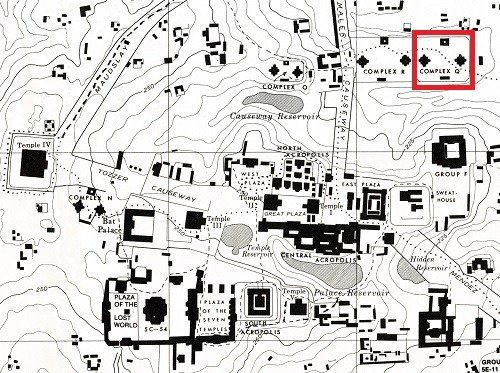

GROUP R (GROUP 4E-3)
This group was built at around 790AD.


What do you want to explore now?
Author: Rudy at Backpack and Snorkel
Bio: Owner of Backpack and Snorkel Travel Guides. We create in-depth guides to help you plan unforgettable vacations around the world.
Other popular Purple Travel Guides you may be interested in:
Like this Backpack and Snorkel Purple Travel Guide? Pin these for later:
